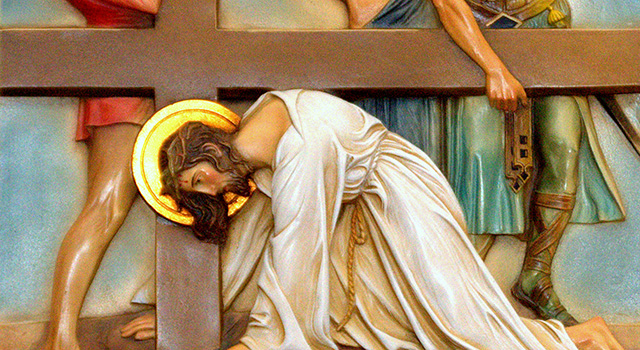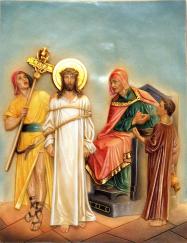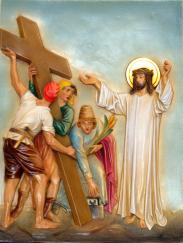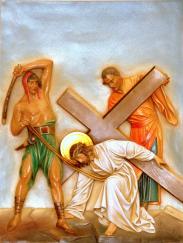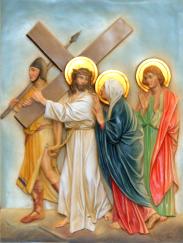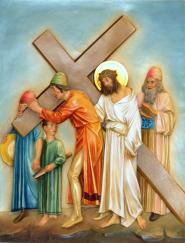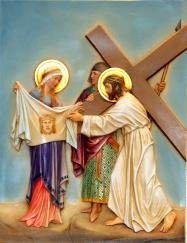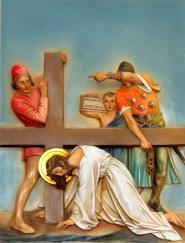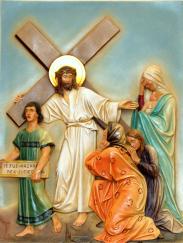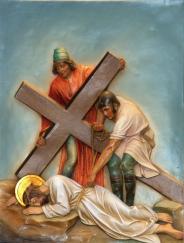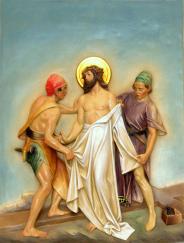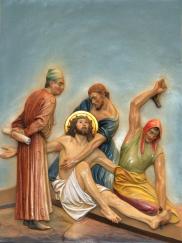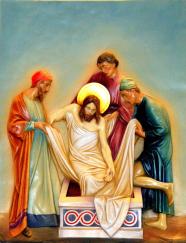By Jim Davis - Florida Catholic
Photography: JIM DAVIS | FC
CORAL SPRINGS | The day Jesus died is the grievous focus of the popular devotional practice known as the Stations of the Cross. During this Lenten devotion, the faithful walk with Jesus through his condemnation, his walk through the streets of Jerusalem, and finally his death and burial.
The Stations take many forms: statues, bronze plaques, paintings, stained-glass windows, even full-size crosses. At St. Elizabeth Ann Seton Parish, Coral Springs, they are rendered as evocative painted plaques illustrating each scene.
Each of the Stations stands for an actual spot in Jerusalem, along a street called the Via Dolorosa or Way of Sorrow. The events include Jesus' condemnation by Pilate, the women of Jerusalem weeping for him, the three times he fell as he carried his cross, and his crucifixion and burial.
During the devotion, a priest, deacon or lay person leads the group to each Station, then offers a meditation and a prayer. The hymn "Stabat Mater" may be sung also. The effect is that of a symbolic pilgrimage.
Pilgrims walked the original Stations in Jerusalem at least as early as the fourth century. But by the 13th century, the conflict of the Crusades made it harder to visit the Holy Land. Franciscans who took over custody of the shrines helped promote their devotions through copies in European churches.
Today, almost every Catholic church has at least one set of stations, and many retreat centers have outdoor stations as well.
